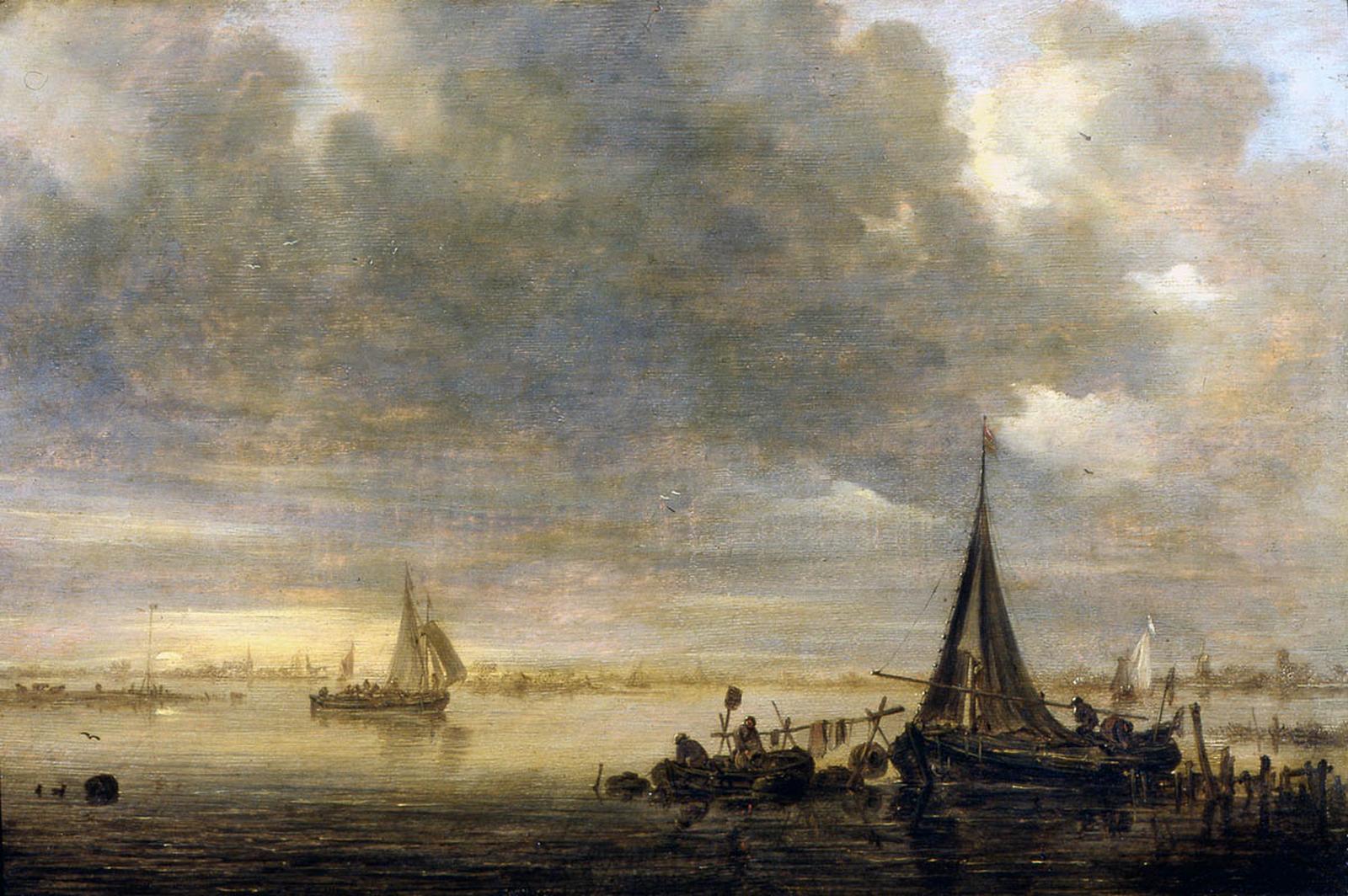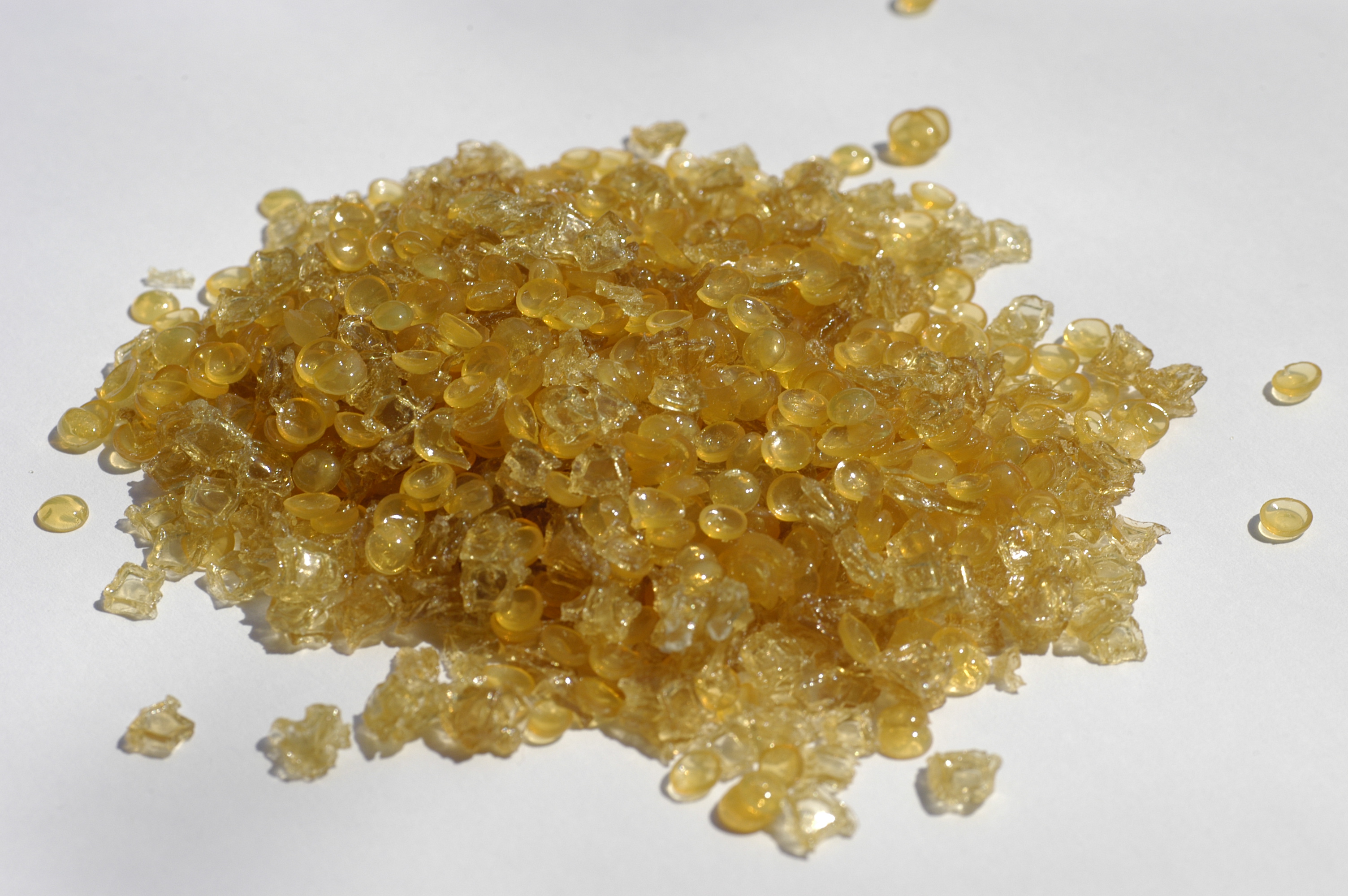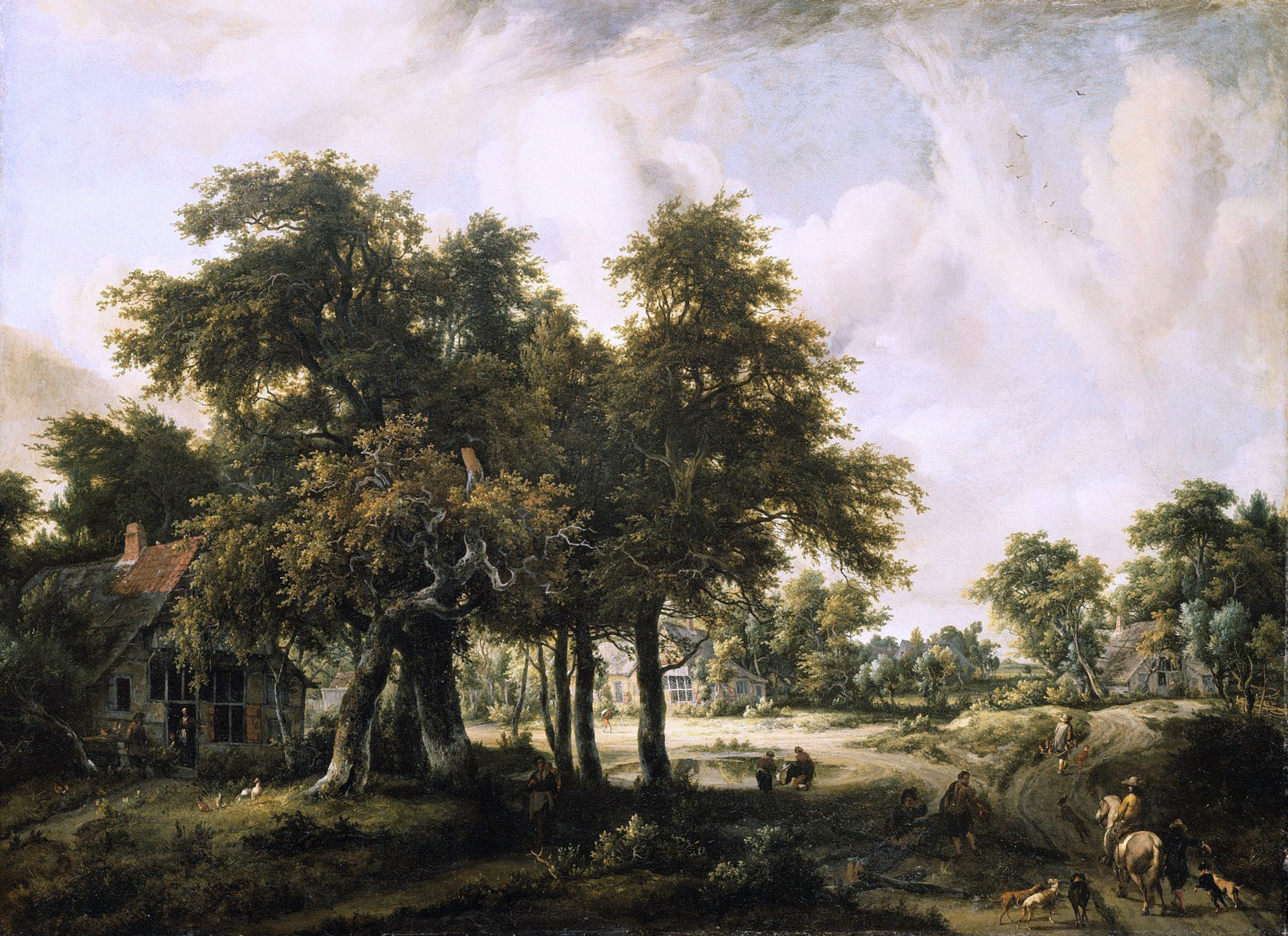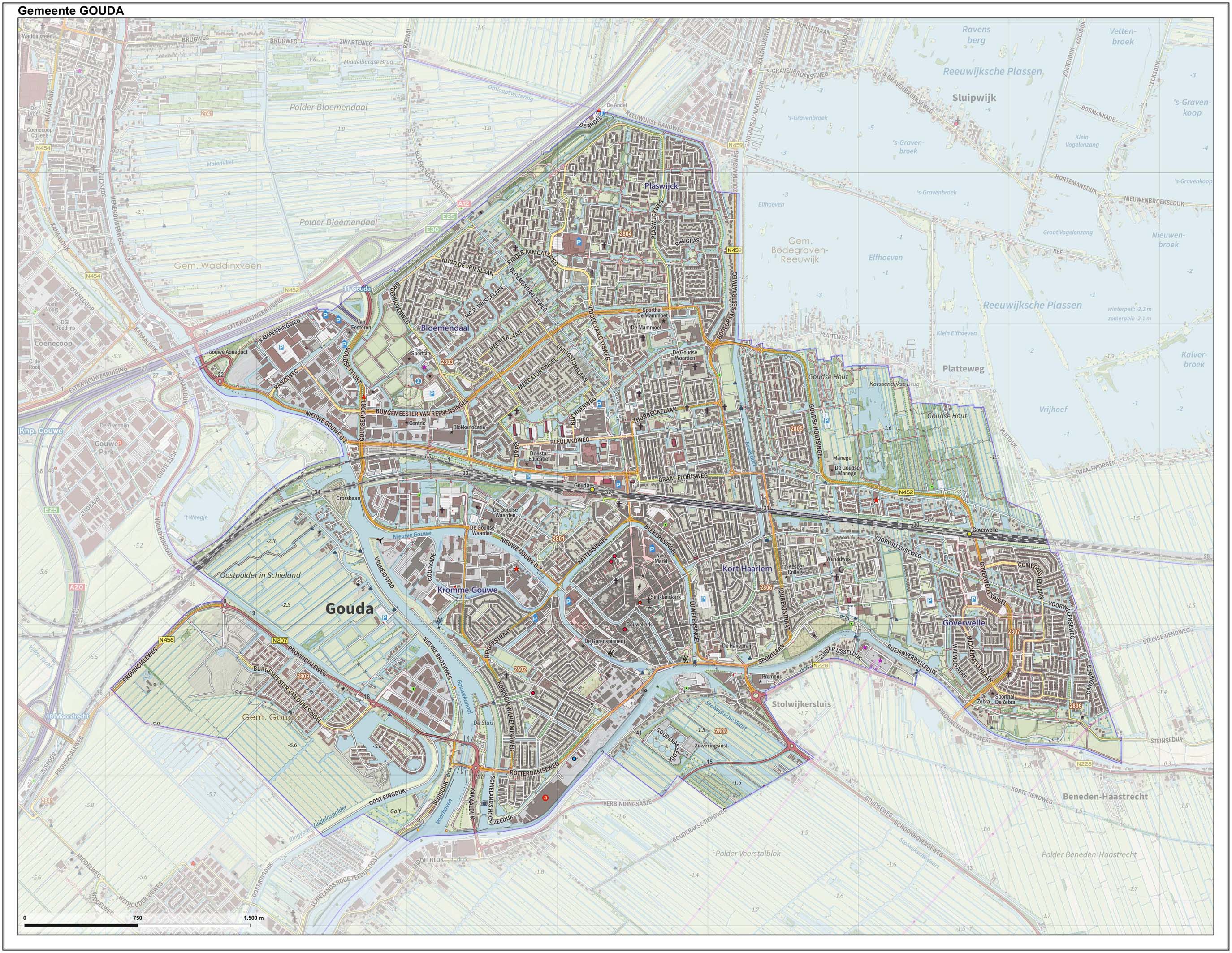|
Jan Josefsz Van Goyen
Jan Josephszoon van Goyen (; 13 January 1596 – 27 April 1656) was a Dutch landscape painter. The scope of his landscape subjects was very broad as he painted forest landscapesm marines, river landscapes, beach scenes, winter landscape, cityscapes, architectural views and landscapes with peasants. File:Leipzig, Museum der bildenden Künste, Jan van Goyen, Bauerngehöft.JPG, ''Farmhouse'' (1628), oil on panel, 27.5 x 37.5 cm., Museum der bildenden Künste File:Goyen 1633 Peasant Huts with a Sweep Well.jpg, ''Peasant Huts with a Sweep Well'' (1633), oil on panel, 55 x 80 cm., Gemäldegalerie Alte Meister File:Goyen 1636 Village at the River.jpg, ''Village at the River'' (1636), oil on panel, 39,5 x 60 cm., Alte Pinakothek File:Zeil- en roeiboten in een riviermonding Rijksmuseum Amsterdam SK-C-1780.png, ''Sailing and Row boats in an Estuary'' (1640), oil on panel, 77 x 116 cm., Museum De Lakenhal File:Landskapsmålning, 1600-tal, van Goyen - Hallwylska museet - 21 ... [...More Info...] [...Related Items...] OR: [Wikipedia] [Google] [Baidu] |
Gerard Ter Borch
Gerard ter Borch (; December 1617 – 8 December 1681), also known as Gerard Terburg (), was a Dutch genre painter who lived in the Dutch Golden Age. He influenced fellow Dutch painters Gabriel Metsu, Gerrit Dou, Eglon van der Neer and Johannes Vermeer. According to Arthur K. Wheelock Jr., Ter Borch "established a new framework for subject matter, taking people into the sanctum of the home", showing the figures' uncertainties and expertly hinting at their inner lives. His influence as a painter, however, was later surpassed by Vermeer. Biography Gerard ter Borch was born in December 1617 in Zwolle in the province of Overijssel in the Dutch Republic. He received an excellent education from his father Gerard ter Borch the Elder, also an artist, and developed his talent very early. The inscription on a study of a head proves that Ter Borch was at Amsterdam in 1632, where he studied possibly under Willem Cornelisz Duyster or Pieter Codde. Duyster's influence can be traced in a pic ... [...More Info...] [...Related Items...] OR: [Wikipedia] [Google] [Baidu] |
Still-life
A still life (plural: still lifes) is a work of art depicting mostly inanimate subject matter, typically commonplace objects which are either natural (food, flowers, dead animals, plants, rocks, shells, etc.) or man-made (drinking glasses, books, vases, jewelry, coins, pipes, etc.). With origins in the Middle Ages and Ancient Greco-Roman art, still-life painting emerged as a distinct genre and professional specialization in Western painting by the late 16th century, and has remained significant since then. One advantage of the still-life artform is that it allows an artist much freedom to experiment with the arrangement of elements within a composition of a painting. Still life, as a particular genre, began with Netherlandish painting of the 16th and 17th centuries, and the English term ''still life'' derives from the Dutch word ''stilleven''. Early still-life paintings, particularly before 1700, often contained religious and allegorical symbolism relating to the objects dep ... [...More Info...] [...Related Items...] OR: [Wikipedia] [Google] [Baidu] |
Ground (drawing Surface)
Ground may refer to: Geology * Land, the surface of the Earth not covered by water * Soil, a mixture of clay, sand and organic matter present on the surface of the Earth Electricity * Ground (electricity), the reference point in an electrical circuit from which voltages are measured * Earthing system, part of an electrical installation that connects with the Earth's conductive surface * Ground and neutral, closely related terms Law * Ground (often grounds), in law, a rational motive or basis for a belief, conviction, or action taken, such as a legal action or argument: * Grounds for divorce, regulations specifying the circumstances under which a person will be granted a divorce Music * ''Ground'' (album), the second album by the Nels Cline Trio * "Ground" (song), one of the songs in the debut album of the Filipino rock band Rivermaya * Ground bass, in music, a bass part that continually repeats, while the melody and harmony over it change * ''The Ground'', a 2005 album by Nor ... [...More Info...] [...Related Items...] OR: [Wikipedia] [Google] [Baidu] |
Animal Glue
Animal glue is an adhesive that is created by prolonged boiling of animal connective tissue in a process called rendering. In addition to being used as an adhesive it is used for coating and sizing, in decorative composition ornaments, and as a clarifying agent. These protein colloid glues are formed through hydrolysis of the collagen from skins, bones, tendons, and other tissues, similar to gelatin. The word ''collagen'' itself derives from Greek (), meaning 'glue'. These proteins form a molecular bond with the glued object. Conventionally, keratin glues, while made from animal parts like horns and hooves, are not considered animal glues as they are not collagen glues. Stereotypically, the animal in question is a horse, and horses that are put down are often said to have been "sent to the glue factory". However, other animals are also used, including cattle, rabbits and fish. History Early uses Animal glue has existed since ancient times, although its usage was not widespr ... [...More Info...] [...Related Items...] OR: [Wikipedia] [Google] [Baidu] |
Jan Van Goyen - Wageningen, MdbK Leipzig
Jan, JaN or JAN may refer to: Acronyms * Jackson, Mississippi (Amtrak station), US, Amtrak station code JAN * Jackson-Evers International Airport, Mississippi, US, IATA code * Jabhat al-Nusra (JaN), a Syrian militant group * Japanese Article Number, a barcode standard compatible with EAN * Japanese Accepted Name, a Japanese nonproprietary drug name * Job Accommodation Network, US, for people with disabilities * ''Joint Army-Navy'', US standards for electronic color codes, etc. * ''Journal of Advanced Nursing'' Personal name * Jan (name), male variant of ''John'', female shortened form of ''Janet'' and ''Janice'' * Jan (Persian name), Persian word meaning 'life', 'soul', 'dear'; also used as a name * Ran (surname), romanized from Mandarin as Jan in Wade–Giles * Ján, Slovak name Other uses * January, as an abbreviation for the first month of the year in the Gregorian calendar * Jan (cards), a term in some card games when a player loses without taking any tricks or scoring a mini ... [...More Info...] [...Related Items...] OR: [Wikipedia] [Google] [Baidu] |
Aert Van Der Neer
Aert van der Neer, or Aernout or Artus (c. 16039 November 1677), was a landscape painter of the Dutch Golden Age, specializing in small night scenes lit only by moonlight and fires, and snowy winter landscapes, both often looking down a canal or river. He was a contemporary of Aelbert Cuyp and Meindert Hobbema, and like the latter he lived and died in comparative obscurity. Biography Recent (2008) research by René van Dijk of the Gorinchem Regional Archive has established that Van Der Neer was born in Gorinchem. Spring 2009 newsletter (in Dutch) of the Stichting Gouden Eeuw Gorinchem (Gorinchem Golden Age Foundation). According to Arnold Houbraken, Van Der Neer lived in Gorinchem as a steward to the lords of Arkel, which would account for the absence of any pictures dating from his early years. He became an amateur painter possibly upon contact with the Amsterdam painters Rafael and Jochem Govertsz Camphuysen, whose sister Lysbeth he married in 1629. They had six children: Gr ... [...More Info...] [...Related Items...] OR: [Wikipedia] [Google] [Baidu] |
Meindert Hobbema
Meindert Lubbertszoon Hobbema (bapt. 31 October 1638 – 7 December 1709) was a Dutch Golden Age painter of landscapes, specializing in views of woodland, although his most famous painting, ''The Avenue at Middelharnis'' (1689, National Gallery, London), shows a different type of scene. Hobbema was a pupil of Jacob van Ruisdael, the pre-eminent landscape painter of the Dutch Golden Age, and in his mature period produced paintings developing one aspect of his master's more varied output, specializing in "sunny forest scenes opened by roads and glistening ponds, fairly flat landscapes with scattered tree groups, and water mills", including over 30 of the last in paintings. The majority of his mature works come from the 1660s; after he married and took a job as an exciseman in 1668 he painted less, and after 1689 apparently not at all. He was not very well known in his lifetime or for nearly a century after his death, but became steadily more popular from the last decades of t ... [...More Info...] [...Related Items...] OR: [Wikipedia] [Google] [Baidu] |
Ludolf Backhuysen
Ludolf BakhuizenLudolf Bakhuizen at the (28 December 1630 – 7 November 1708) was a German-born painter, draughtsman, calligrapher and printmaker. He was the leading Dutch painter of maritime subjects after and [...More Info...] [...Related Items...] OR: [Wikipedia] [Google] [Baidu] |
Hendrick Avercamp
Hendrick Avercamp (January 27, 1585 (bapt.) – May 15, 1634 (buried)) was a Dutch painter during the Dutch Golden Age of painting. He was one of the earliest landscape painters of the 17th-century Dutch school, he specialized in painting the Netherlands in winter. His paintings are colorful and lively, with carefully crafted images of the people in the landscape. His works give a vivid depiction of sport and leisure in the Netherlands in the beginning of the 17th century. Many of Avercamp's paintings feature people ice skating on frozen lakes. Avercamp's work enjoyed great popularity and he sold his drawings, many of which were tinted with water-color, as finished pictures to be pasted into the albums of collectors. The Royal Collection has an outstanding collection of his works. Life Avercamp was born in Amsterdam, where he studied with the Danish-born portrait painter Pieter Isaacsz (1569–1625), and perhaps also with David Vinckboons, who was a follower of Pieter Brue ... [...More Info...] [...Related Items...] OR: [Wikipedia] [Google] [Baidu] |
Aelbert Cuyp
Aelbert Jacobszoon Cuyp () (20 October 1620 – 15 November 1691) was one of the leading Dutch Golden Age painters, producing mainly landscapes. The most famous of a family of painters, the pupil of his father Jacob Gerritszoon Cuyp (1594–1651/52), he is especially known for his large views of Dutch riverside scenes in a golden early morning or late afternoon light. Biography Cuyp was born in Dordrecht on 20 October 1620, and died there on 15 November 1691. Known as the Dutch equivalent of Claude Lorrain, he inherited a considerable fortune. His family were all artists, with his uncle Benjamin and grandfather Gerrit being stained glass cartoon designers. Jacob Gerritszoon Cuyp, his father, was a portraitist. Cuyp's father was his first teacher and they collaborated on many paintings throughout his lifetime. Little is known about Aelbert Cuyp's life. Even Arnold Houbraken, a noted historian of Dutch Golden Age paintings and the sole authority on Cuyp for the hundred years follow ... [...More Info...] [...Related Items...] OR: [Wikipedia] [Google] [Baidu] |
Jacob Van Ruisdael
Jacob Isaackszoon van Ruisdael (; 1629 – 10 March 1682) was a Dutch painter, draughtsman, and etcher. He is generally considered the pre-eminent landscape painter of the Dutch Golden Age, a period of great wealth and cultural achievement when Dutch painting became highly popular. Prolific and versatile, Ruisdael depicted a wide variety of landscape subjects. From 1646 he painted Dutch countryside scenes of remarkable quality for a young man. After a trip to Germany in 1650, his landscapes took on a more heroic character. In his late work, conducted when he lived and worked in Amsterdam, he added city panoramas and seascapes to his regular repertoire. In these, the sky often took up two-thirds of the canvas. In total he produced more than 150 Scandinavian views featuring waterfalls. Ruisdael's only registered pupil was Meindert Hobbema, one of several artists who painted figures in his landscapes. Hobbema's work has at times been confused with Ruisdael's. Ruisdael ... [...More Info...] [...Related Items...] OR: [Wikipedia] [Google] [Baidu] |
Gouda, South Holland
Gouda () is a city and municipality in the west of the Netherlands, between Rotterdam and Utrecht, in the province of South Holland. Gouda has a population of 75,000 and is famous for its Gouda cheese, stroopwafels, many grachten, smoking pipes, and its 15th-century city hall. Its array of historic churches and other buildings makes it a very popular day trip destination. In the Middle Ages, a settlement was founded at the location of the current city by the Van der Goude family, who built a fortified castle alongside the banks of the Gouwe River, from which the family and the city took its name. The area, originally marshland, developed over the course of two centuries. By 1225, a canal was linked to the Gouwe and its estuary was transformed into a harbour. City rights were granted in 1272. History Around the year 1100, the area where Gouda now is located was swampy and covered with a peat forest, crossed by small creeks such as the Gouwe. Along the shores of this st ... [...More Info...] [...Related Items...] OR: [Wikipedia] [Google] [Baidu] |

.jpg)
_-_Bouquet_of_Flowers_in_a_Ceramic_Vase.jpg)







